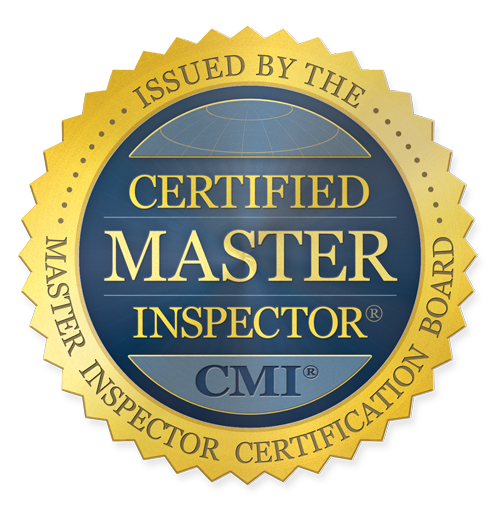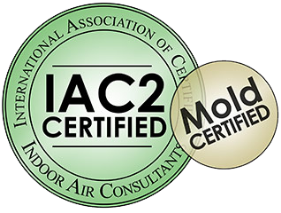Time flies and homeowners often reach the end of their new home’s builder warranty sooner than they expect.
It is best to schedule a professional home inspection at the 11-month mark (or the 23-month mark if your builder offered a two-year warranty term), so there’s time to file a customer service ticket and schedule the necessary repairs.
Most home builders offer one- to two-year warranties for home repairs or retrofits that result from a builder or subcontractor error. During that time, any builder-related defects are performed completely free of charge, and those repairs are backed with a continuing warranty period.
Once the builder’s warranty expires, you’re on your own when it comes to repairing or amending any construction that falls outside the realm of major structural components. Making the small investment in a home inspection before the warranty expires catches builder defects before they become your financial responsibility.
While builders do their best to perform home inspections before residents move in and to complete initial punch-list items within the first few weeks or months of occupancy, it can take a year or two of normal wear-and-tear and rigorous storm seasons before homeowners know for sure their house is contractor defect-free.
Bonus Note: Your home inspection may be worth more than just the repairing of necessary items. Documentation from our experienced home inspectors may also save money on your homeowner’s insurance policy, translating to exponential savings over the home’s lifetime.
A Home Inspection Identifies Common Builder Defects
A professional home inspection goes way beyond the obvious electrical outlet that isn’t working or stripped cabinet hinges. We investigate hidden and lesser-accessed spaces where some of the most common contractor defects are hidden from the homeowner’s sight.
Some of the most common building defects we identify during an 11-month home warranty inspection include:
Improper roof vent installation
Adequate roof vent and attic ventilation are important features in any home, but they’re especially important in Florida where hot, humid weather affects whole-home energy efficiency and air quality. If attic and roofing ventilation are defective or inadequate, your home is at greater risk for roof leaks, elevated humidity levels, moisture damage, and mold/mildew blooms.
Visit energy.gov’s page on the importance of roof/attic ventilation to learn more.
Leaky plumbing or faulty electrical work
Most of the home’s plumbing and electrical wiring are hidden in interior wall spaces, attic, sub-floors, and crawlspaces. Unless you have a current understanding of current state and regional building codes, it’s easy to miss any plumbing installations that aren’t satisfactory.
Similarly, latent small or moderate plumbing leaks can wreak havoc in hidden spaces. If leaks aren’t caught, repaired, and sanitized (after repairing rot and getting rid of mold/mildew) before the warranty runs out, you can wind up with thousands of dollars worth of repairs down the road that never should have happened in the first place.
Inadequate insulation
The U.S. Department of Energy states, “Properly insulating your home not only reduces heating and cooling costs but also improves comfort,” so you want to make sure relevant areas of your home (crawlspaces, exterior walls, the attic, etc.) are adequately insulated before the builder’s warranty is expired. Our home inspection assesses both insulation quality and quantity.
Your general contractor is ultimately responsible for work performed by any of the subcontractors. If the insulation contractor installed inadequate insulation, it needs to be addressed. If subcontractors (HVAC, electrical, plumbing, home automation, etc.) damaged or dislodged insulation, that also requires amendment because it negatively impacts interior temperatures, energy spending, and moisture control.
Missing grout or caulking
While grout is largely decorative, missing grout in any countertop, flooring, or wall applications puts the surrounding tile and grout at risk for quicker corrosion, which leads to more chipped or missing grout and tiles or counter surfaces more apt to separate from their foundation.
Caulking is essential for sealing any areas that are vulnerable to moisture penetration or air. It is used around tub and tile surrounds, windows, door frames, crawl space and attic access doors, and around any exterior wall penetrations. It’s easy for contractors or subcontractors to forget to complete the seemingly small but essential task of caulking any gaps where water/air can infiltrate interior home spaces.
Cracked or damaged shingles or tiles
With routine annual roof maintenance and inspections, a new roof is supposed to hold out for at least two decades or more, depending on the types of roofing materials selected. If there are any misapplied shingles or tiles, or the roofing crew took shortcuts, cracked and damaged shingles or tiles typically reveal themselves within the first year or so – or after the first one or two major storms.
Cracked and damaged shingles/tiles signify that other roof repairs may be necessary. Since roofs are one of the most expensive structural systems, early detection is key if you want to avoid footing the whole repair or replacement bill.
Minor cracks in the stucco (or interior walls)
The ground underneath your home continues to shift and move in the immediate years after the build is complete. As a result, the hard structural components also shift, leading to cracks in exterior stucco walls and along the interior walls.
While aesthetic concerns are certainly an issue, more importantly, are our concerns for structural soundness. Cracks in exterior stucco mean the house is no longer watertight, putting it at risk for rain, wind, and moisture damage. Exterior cracks also make it more vulnerable to pest infestations.
Our home inspection reports cite any cracks in stucco, siding defects, or interior wall cracks that go beyond cosmetics and warrant repair.
Identify Defects Missed During the First Home Inspection
While performing an 11-month home inspection, our inspectors move efficiently and meticulously through the house to identify any additional defects that have become apparent or were not identified during the initial contractor-led home inspection.
This includes items such as:
- Loose toilets
- Cabinet damage
- Misaligned drawers
- Appliance damage or malfunctions
- HVAC system issues
- Pest damage or infestation
- Faulty light switches or electrical sockets
- Improper 3-way switch wiring
- And more
We use advanced, non-invasive technology that gives inspectors the ability to show clients moisture, insulation, and ventilation issues in their homes that can’t be revealed using conventional inspection methods. Homeowners and builders can trust that our home inspection citations are honest and accurate.
Schedule a Fast, Thorough, & Affordable Home Inspection
When you schedule a home inspection with Super Inspection Pros, you benefit from a fast, thorough, honest, and affordable home inspection. We guarantee a 24-hour turnaround time and will provide a detailed evaluation for you to pass on to your builder. The report includes the positive features of the home as well as potential issues that should be fixed.
Scheduling the home inspection at the 11-month mark gives you the opportunity to make the most of your contractor’s warranty period, scheduling essential home repairs on their dime.

